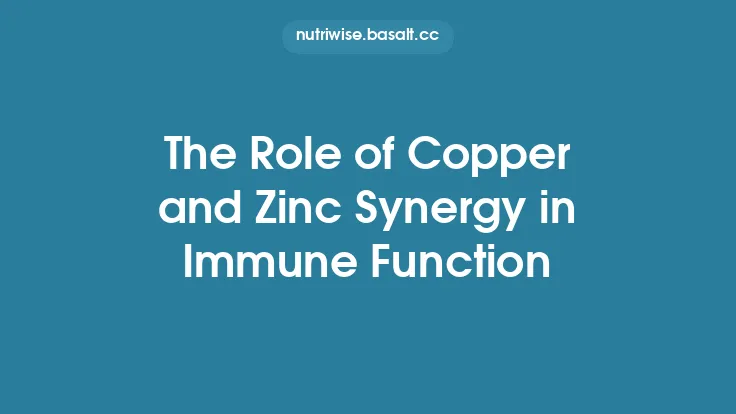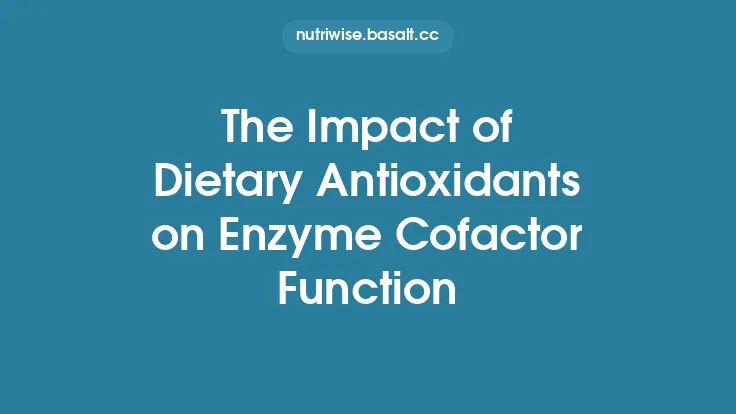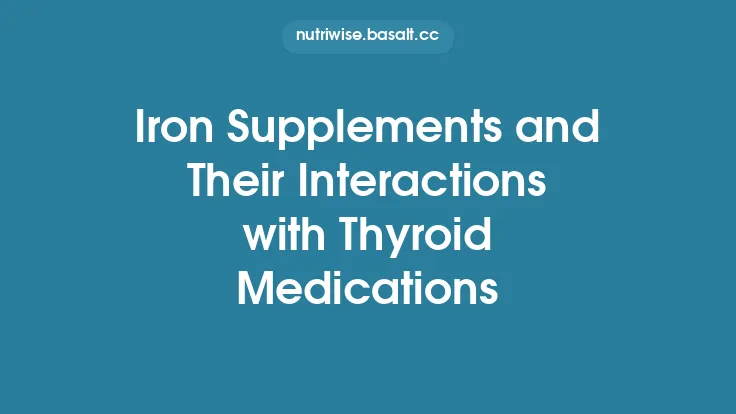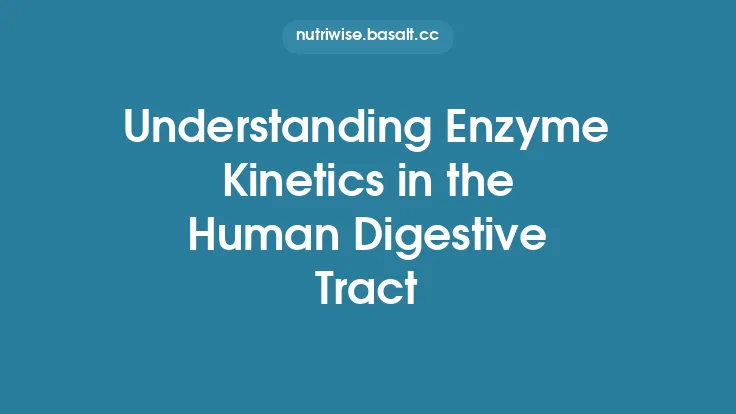Molybdenum and iron are two of the most ancient trace elements incorporated into the biochemistry of living organisms. Their partnership is most evident in a handful of highly specialized enzymes that perform some of the most chemically demanding reactions in nature—oxidations, reductions, and the transfer of small, often toxic, molecules. Understanding how these two metals cooperate at the molecular level provides insight into fundamental metabolic pathways, informs clinical nutrition, and guides future biotechnological applications.
Molybdenum: An Overview of Its Biological Role
Molybdenum (Mo) is a transition metal that, despite its low dietary requirement (≈45 µg day⁻¹ for adults), is indispensable because it forms the active site of several enzymes known collectively as the molybdo‑enzymes. In its biologically active form, molybdenum is coordinated within a pterin‑derived cofactor—most commonly the molybdopterin (MPT) or its dinucleotide variant (MPT‑d). The metal is typically present as a Mo(VI) oxo‑species (Mo=O) that can undergo reversible redox cycling between Mo(VI) and Mo(IV) during catalysis. This redox flexibility enables molybdenum to act as an electron sink, accepting electrons from substrate oxidation and passing them to downstream electron carriers.
Key characteristics of molybdenum that make it suitable for enzymatic catalysis include:
- High oxidation state stability – Mo(VI) is stabilized by strong Mo=O double bonds, allowing the metal to accommodate high‑energy oxygen transfer.
- Ligand versatility – The pterin scaffold provides a robust, yet adaptable, coordination environment that can be fine‑tuned by the protein matrix.
- Ability to form multinuclear clusters – In certain enzymes, molybdenum is part of a larger metal cluster that includes iron–sulfur (Fe‑S) centers, facilitating long‑range electron transfer.
Iron: Essential Functions and Its Redox Versatility
Iron (Fe) is the most abundant transition metal in the human body, primarily existing as Fe²⁺ (ferrous) or Fe³⁺ (ferric). Its central role in biology stems from its capacity to undergo rapid, reversible redox changes, making it an ideal conduit for electron flow. Iron is incorporated into proteins as:
- Heme groups – Iron coordinated within a porphyrin ring, central to oxygen transport (hemoglobin) and electron transport (cytochromes).
- Iron‑sulfur clusters – Assemblies such as [2Fe‑2S] and [4Fe‑4S] that serve as electron carriers and structural scaffolds.
- Non‑heme mononuclear sites – Found in enzymes like ribonucleotide reductase.
The redox potential of iron can be modulated by its ligands and protein environment, allowing precise control over electron transfer rates. This tunability is crucial when iron partners with molybdenum, as the two metals must exchange electrons efficiently while maintaining distinct chemical identities.
The Mo–Fe Cofactor: Structural Insights
The most celebrated example of a direct Mo–Fe partnership is the FeMo cofactor (FeMoco) of nitrogenase, the enzyme complex responsible for biological nitrogen fixation. FeMoco is a complex, interlocked cluster comprising:
- One molybdenum atom coordinated by a homocitrate ligand and three sulfide bridges.
- Seven iron atoms arranged in a distorted cubane‑like geometry, each bound to sulfide ions.
- A central interstitial carbon atom (recently identified by crystallography) that stabilizes the cluster.
The FeMoco is embedded within the protein’s active site and is linked to a series of Fe‑S clusters that shuttle electrons from the reductase component to the catalytic core. The precise arrangement of Mo and Fe atoms creates a unique electronic landscape that enables the reduction of atmospheric N₂ to NH₃ under ambient conditions—a reaction that, in industrial settings, requires high temperature and pressure.
Beyond nitrogenase, other molybdo‑enzymes incorporate iron‑sulfur clusters adjacent to the molybdenum center. For instance:
- Xanthine oxidoreductase (XOR) contains a Mo‑center bound to a pterin cofactor and a proximal [2Fe‑2S] cluster that mediates electron flow from substrate oxidation to the final electron acceptor (NAD⁺ or O₂).
- Aldehyde oxidase (AO) similarly couples a Mo‑MPT active site with an Fe‑S cluster, facilitating the oxidation of aldehydes and heterocyclic compounds.
These architectures illustrate a recurring theme: iron‑sulfur clusters act as electron relays, delivering reducing equivalents to the molybdenum site where substrate oxidation occurs.
Key Enzymes that Harness the Mo–Fe Partnership
| Enzyme | Primary Function | Mo‑Cofactor | Fe Component | Physiological Relevance |
|---|---|---|---|---|
| Nitrogenase (MoFe protein) | Reduction of N₂ → NH₃ | FeMoco (Mo + 7 Fe) | Multiple Fe‑S clusters (Fe‑protein) | Atmospheric nitrogen fixation in legumes and free‑living diazotrophs |
| Xanthine oxidoreductase (XOR) | Oxidation of hypoxanthine → xanthine → uric acid; also reduces NAD⁺ | Mo‑MPT (Mo=O) | [2Fe‑2S] cluster | Purine catabolism, generation of reactive oxygen species (ROS) in immune cells |
| Aldehyde oxidase (AO) | Oxidation of aromatic aldehydes and heterocycles | Mo‑MPT | [2Fe‑2S] cluster | Drug metabolism, detoxification of endogenous aldehydes |
| Sulfite oxidase (SO) | Oxidation of sulfite → sulfate | Mo‑MPT | No Fe‑S cluster (uses a heme‑type electron acceptor) | Sulfur amino‑acid metabolism, protection against sulfite toxicity |
| Formate dehydrogenase (FDH) (in some bacteria) | Oxidation of formate → CO₂ | Mo‑MPT | Fe‑S clusters | Energy metabolism in anaerobic microbes |
While sulfite oxidase does not contain an Fe‑S cluster, it still exemplifies the broader principle that molybdenum often works in concert with other redox‑active centers—frequently iron‑based—to complete multi‑step electron transfer pathways.
Mechanistic Synergy in Catalysis
The catalytic cycles of Mo–Fe enzymes share several mechanistic motifs:
- Substrate Binding at the Mo Center
The substrate (e.g., nitrate, aldehyde, sulfite) coordinates to the oxo‑ligated Mo(VI) via a nucleophilic attack, forming a Mo‑substrate adduct. The pterin scaffold positions the substrate for optimal orbital overlap.
- Two‑Electron Redox at Mo
Mo cycles between Mo(VI) and Mo(IV) during the reaction. In the reduction of N₂, for example, Mo(VI) accepts electrons from the Fe‑S relay, becoming Mo(IV) and enabling the binding and activation of N₂.
- Electron Transfer via Fe‑S Clusters
The Fe‑S clusters act as stepping stones, delivering electrons from external donors (e.g., ferredoxin, NADH) to the Mo site. Their redox potentials are finely tuned to match the energetic demands of each catalytic step.
- Proton Coupling and Product Release
Protonation events are coordinated by surrounding amino‑acid residues, often involving conserved histidines or glutamates. The final product (e.g., NH₃, uric acid) is released from the Mo center, resetting the enzyme for another catalytic turnover.
- Regeneration of the Oxo Ligand
After substrate oxidation, the Mo‑center is re‑oxidized by binding a water molecule that is subsequently deprotonated to regenerate the Mo=O moiety, ready for the next cycle.
The intimate spatial arrangement of Mo and Fe within these enzymes ensures that electron flow is rapid (on the microsecond to millisecond timescale) and that the high‑energy intermediates are stabilized by the protein matrix, preventing uncontrolled side reactions.
Physiological Significance of Mo–Fe Enzyme Activity
- Nitrogen Fixation – The MoFe nitrogenase is the cornerstone of the global nitrogen cycle. By converting inert N₂ into bioavailable ammonia, it supports plant growth and, consequently, the entire food web. The efficiency of this process hinges on the precise Mo–Fe coordination within FeMoco.
- Purine Metabolism – Xanthine oxidoreductase’s Mo–Fe architecture governs the final steps of purine degradation, producing uric acid. Dysregulation can lead to hyperuricemia and gout, underscoring the clinical relevance of this enzyme’s metal partnership.
- Detoxification – Aldehyde oxidase and sulfite oxidase protect cells from toxic aldehydes and sulfite, respectively. Their Mo–Fe (or Mo‑heme) systems ensure rapid oxidation, preventing accumulation of harmful metabolites.
- Microbial Energy Generation – In anaerobic bacteria, formate dehydrogenases that contain Mo–Fe clusters enable the oxidation of formate, feeding electrons into the respiratory chain and supporting growth under oxygen‑limited conditions.
Collectively, these functions illustrate that the Mo–Fe partnership is not a peripheral curiosity but a central pillar of metabolic homeostasis across kingdoms.
Regulation of Molybdenum and Iron Homeostasis
The body maintains tight control over both trace elements to avoid deficiency or toxicity:
- Absorption – Molybdenum is absorbed in the small intestine via a carrier‑mediated process that is enhanced by dietary protein. Iron absorption occurs primarily in the duodenum and is regulated by hepcidin, a hormone that modulates ferroportin activity.
- Transport – Molybdenum is bound to albumin and low‑density lipoproteins in plasma, while iron circulates bound to transferrin. Intracellularly, molybdenum is stored in the mitochondria, often associated with the molybdenum cofactor biosynthetic machinery. Iron is stored in ferritin complexes.
- Cofactor Biosynthesis – The synthesis of the molybdopterin cofactor (Moco) requires a series of enzymes (MOCS1‑3, GPHN) that themselves depend on iron‑sulfur clusters. Thus, adequate iron status is indirectly essential for functional molybdo‑enzymes.
- Feedback Loops – Excess molybdenum can antagonize copper absorption, while iron overload can impair molybdenum utilization by saturating shared transport pathways. Homeostatic mechanisms adjust intestinal uptake and renal excretion to maintain balance.
Implications of Deficiency and Toxicity
- Molybdenum Deficiency – Rare in humans but observed in animal models, deficiency leads to reduced activity of xanthine oxidase and sulfite oxidase, resulting in accumulation of sulfite and impaired purine catabolism. Clinical signs may include neurological disturbances and growth retardation.
- Iron Deficiency – Impairs the assembly of Fe‑S clusters, consequently diminishing the activity of Mo–Fe enzymes such as XOR and nitrogenase (in plants and symbiotic bacteria). This can manifest as anemia, reduced nitrogen fixation in legumes, and compromised detoxification pathways.
- Molybdenum Toxicity – Excessive intake (e.g., from industrial exposure) can cause gout‑like symptoms due to increased uric acid production, and may interfere with copper metabolism, leading to secondary copper deficiency.
- Iron Overload – Conditions like hereditary hemochromatosis increase free iron, promoting oxidative stress that can damage the Fe‑S clusters within Mo–Fe enzymes, reducing their catalytic efficiency.
Understanding these interdependencies is crucial for clinicians and nutritionists when evaluating trace element status, especially in populations with malabsorption disorders or occupational exposures.
Research Frontiers and Emerging Applications
- Synthetic FeMoco Mimics – Chemists are designing small‑molecule analogs of the FeMo cofactor to catalyze nitrogen reduction under mild conditions, aiming to develop sustainable alternatives to the Haber‑Bosch process.
- Engineered Nitrogen‑Fixing Crops – Efforts to transfer nitrogenase genes into non‑leguminous plants require not only the MoFe protein but also the assembly machinery for Fe‑S clusters and the Mo cofactor, highlighting the necessity of coordinated Mo–Fe metabolism.
- Targeted Inhibitors for Xanthine Oxidase – Novel drugs that selectively bind the Mo site while sparing the Fe‑S cluster are being explored to treat hyperuricemia with fewer side effects than current allopurinol therapy.
- Nanobiocatalysts – Immobilizing Mo–Fe enzymes on nanomaterials preserves their activity and enables their use in biosensors for detecting environmental pollutants (e.g., sulfite, aldehydes).
- Systems Biology of Trace Element Interplay – Integrative omics approaches are mapping how fluctuations in dietary Mo and Fe affect the expression and activity of Mo–Fe enzymes, providing a holistic view of micronutrient synergy at the cellular level.
These avenues underscore that the Mo–Fe partnership remains a vibrant field of investigation, with implications ranging from agriculture to medicine and green chemistry.
In sum, the collaboration between molybdenum and iron within enzyme active sites exemplifies a sophisticated evolutionary solution to challenging redox chemistry. By coupling the high‑energy oxo chemistry of molybdenum with the rapid electron‑transfer capabilities of iron‑sulfur clusters, nature has fashioned catalytic machines that drive essential processes such as nitrogen fixation, purine catabolism, and detoxification. Appreciating the structural, mechanistic, and regulatory nuances of this partnership not only enriches our understanding of micronutrient biology but also opens doors to innovative technologies that harness the power of these two trace elements.





